Hello and welcome!
Last Thursday evening, the Paraguayan Embassy had a dinner in honor of Cardinal Alberto Martínez, and they invited me and Mario Paredes to attend.
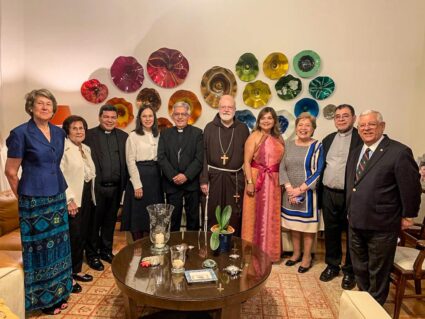
It was a wonderful event, and I was happy to be a part of it.
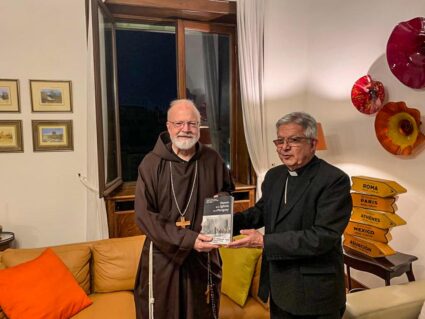
Then, on Friday, I had Mass in the Clementine Chapel, which is very near the Tomb of St. Peter.
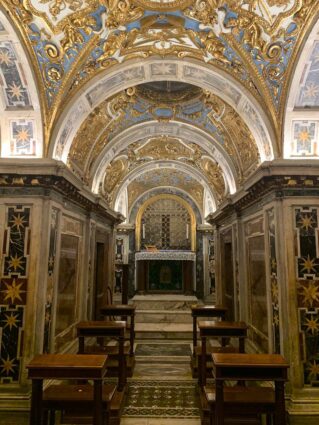
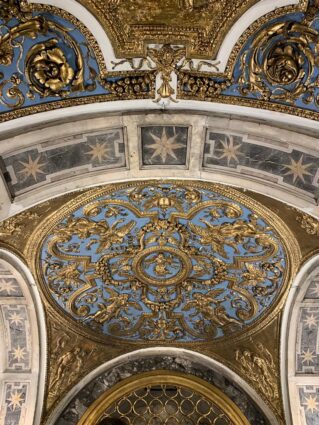
Just outside the chapel is the tomb of Pope Pius XII.
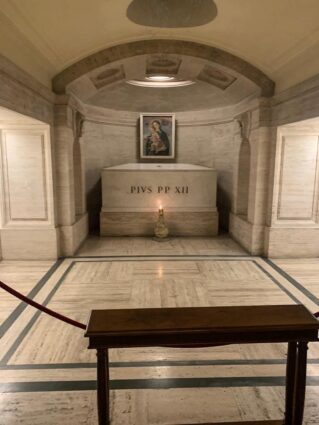
The following morning was the consistory for the creation of 21 new cardinals, among them the Apostolic Nuncio to the United States, Cardinal Christophe Pierre. There was also a Capuchin who was made a cardinal, Cardinal Luis Pascual Dri, but he is in his late 90s, so he was not able to attend in person.
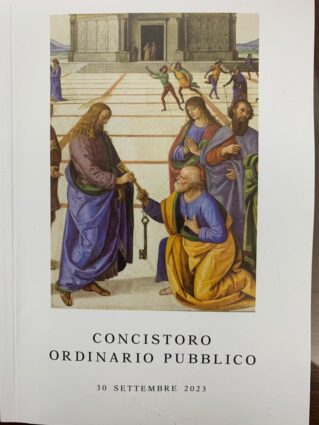
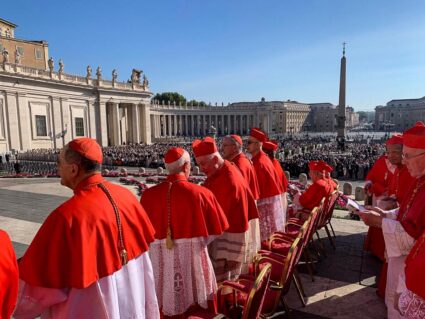
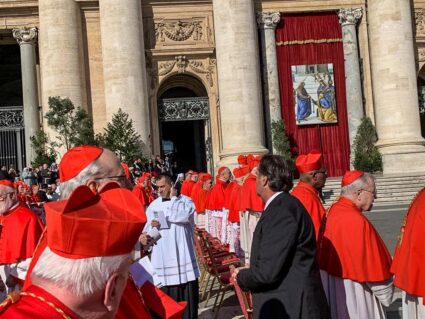
The Mass was held in St. Peter’s Square, and it was a beautiful day to have an outdoor Mass.
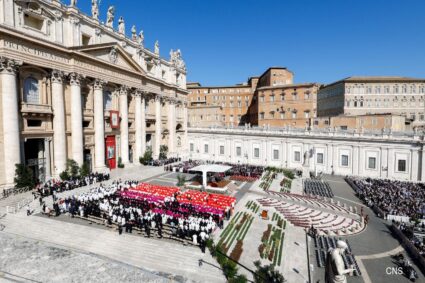
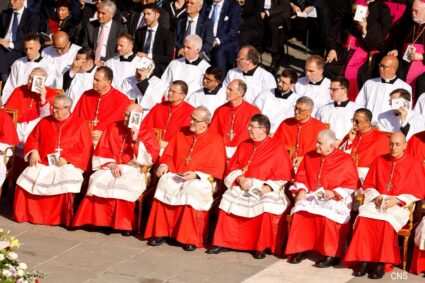
As is tradition, after the consistory, the new cardinals greeted the public in the Apostolic Palace.
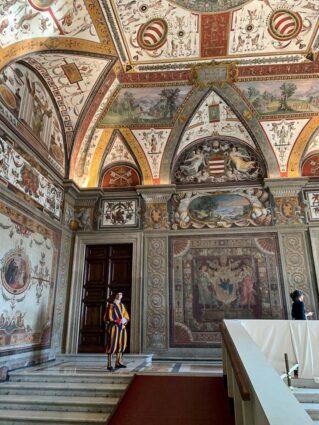
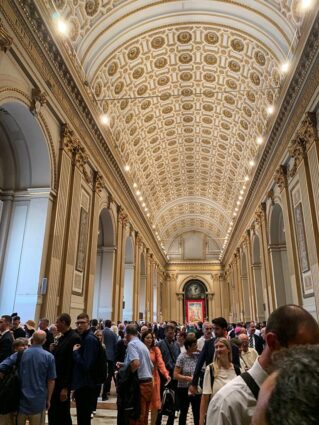
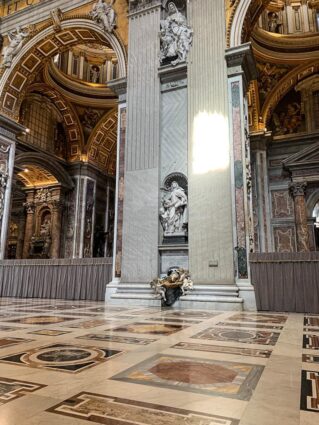
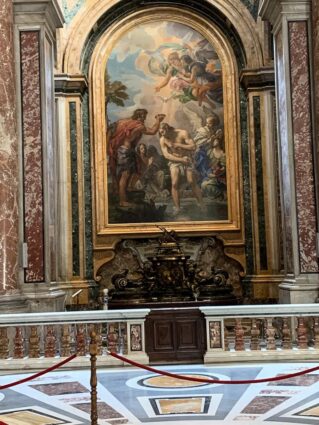
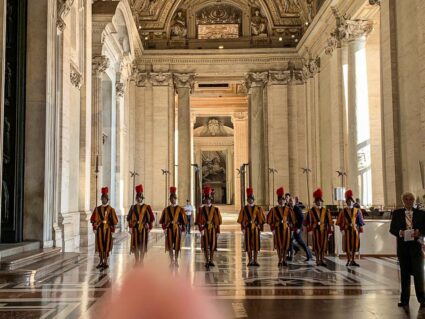
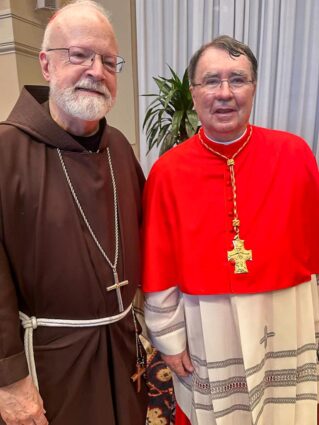
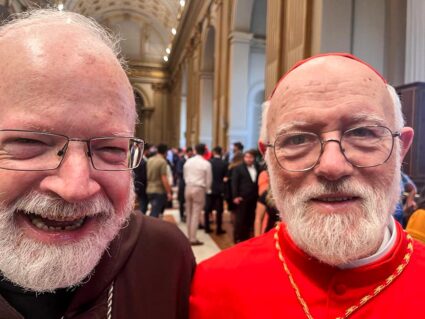
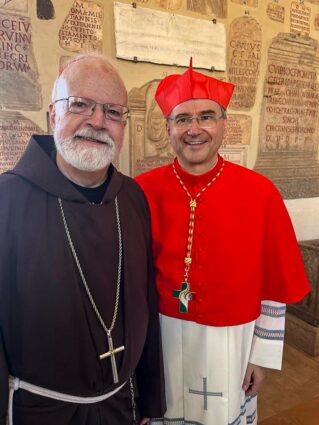
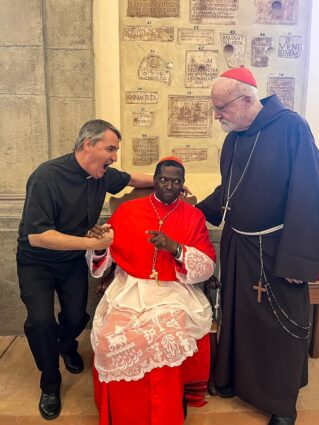
While I was there, I ran to the Cardinal García from Cuba.
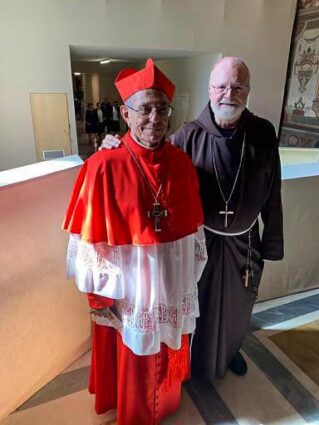
I was also very happy to see Father Brian Stacy, the Guardian at Capuchin College, who was in Rome for meetings.
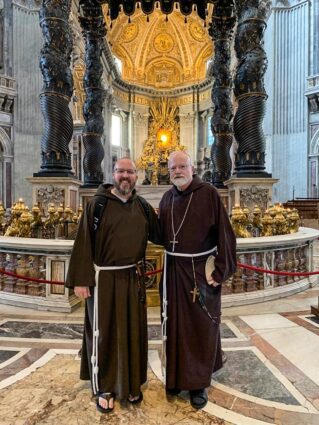
Then, in the afternoon, those of us who are participating in the Synod of Bishops joined an ecumenical prayer vigil that included leaders of many different faith communities, including the Archbishop of Canterbury and the Ecumenical Patriarch of Constantinople.
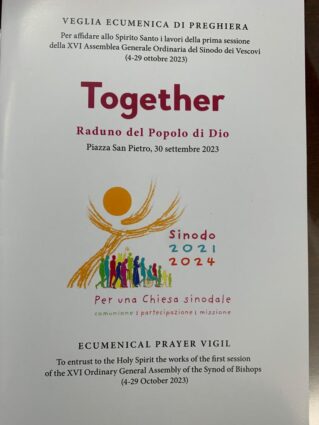
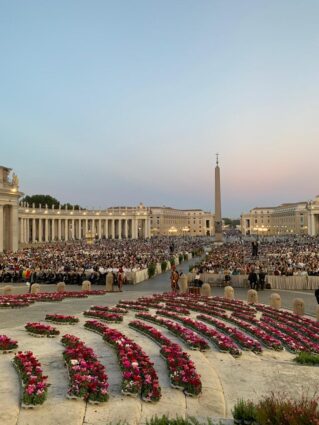
It was a very moving and beautiful celebration with a huge crowd in attendance.
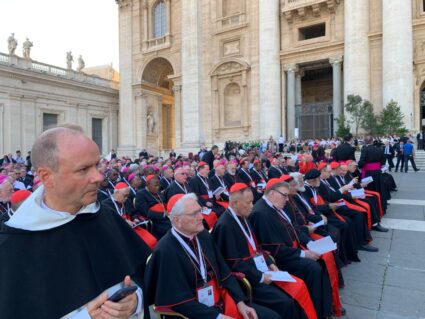
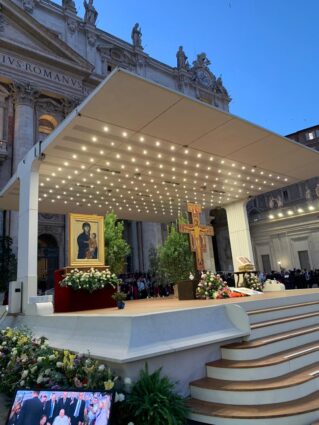
That evening, we began our retreat in preparation for the synod.
It was held at the Fraterna Domus, a retreat center outside of Rome that can accommodate over 800 people. It really is an extraordinary place that seems almost like a village unto itself.
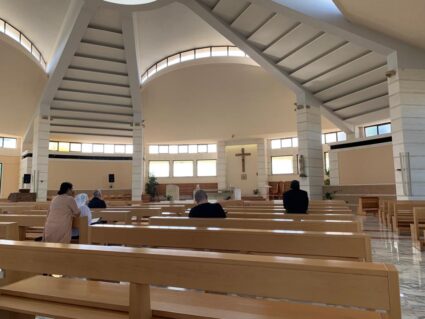
During the retreat, we heard talks by Father Timothy Radcliffe, and Mother Maria Angelini gave meditations twice a day. It was a very good retreat, and I think people benefited greatly from it.
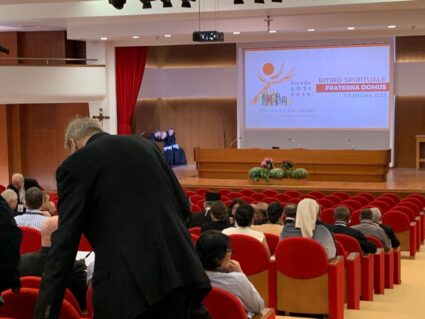
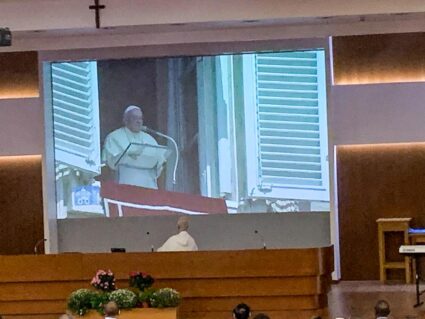
At the retreat, I was very happy to see Margaret Karram, the president of the Focolare Movement who succeeded Chiara Lubich.
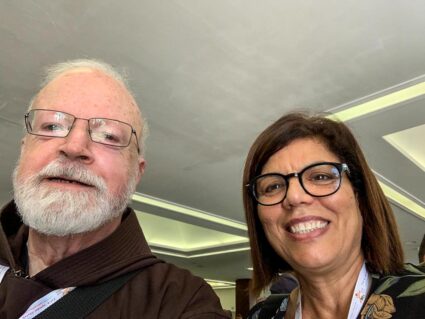
The retreat ended Tuesday evening, and that night, I went to the house of the Capuchins in Rome to celebrate the Transitus of St. Francis.
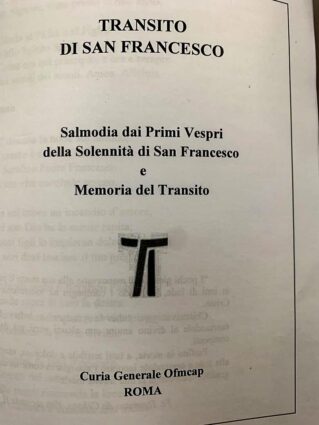
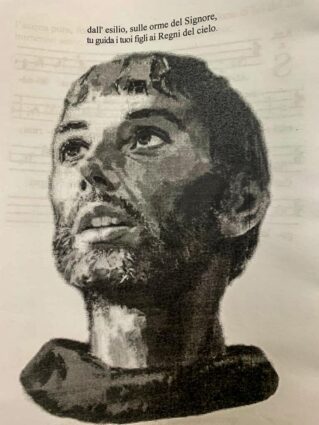
The Feast of St. Francis is, of course, Oct. 4, and Franciscans throughout the world gather the evening before to celebrate the commemoration of his death with a service in which we listen to the Gospel St. Francis had read to him as he was dying, sing the Canticle of Brother Sun and pray Psalm 142.
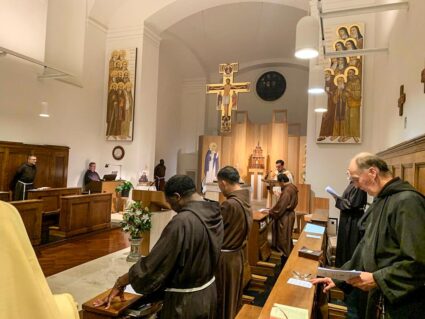
I always find it a very moving ceremony, and I was happy to celebrate it with the friars here in Rome.
Among those who were with us was Cardinal Celestino Aós. He is also a Capuchin, and, as you can see, there’s a bit of a resemblance.
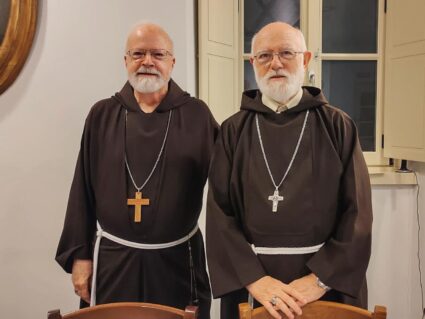
People have often confused Father Raniero Cantalamessa and me, and now they also confuse us with Cardinal Celestino. We were joking that we wished Raniero was there so we could finally prove that we really are three separate people!
Wednesday, on the Feast of St. Francis, we had the opening Mass for the synod.
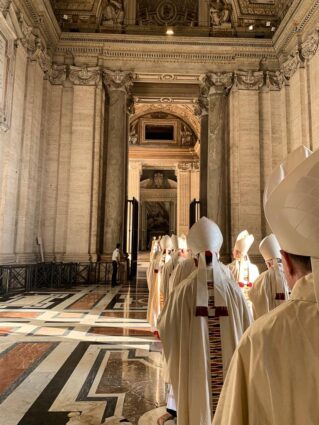
The Holy Father preached a lovely homily:
The Gospel we have just heard is preceded by the account of a difficult moment in Jesus’ mission, which we might call one of “pastoral desolation.” John the Baptist doubts that Jesus is really the Messiah; so many cities he passed through, despite the wonders he performed, were not converted; people accuse him of being a glutton and a drunkard, whereas they had just complained about the Baptist because he was too austere (cf. Mt 11:2-24). Yet we see that Jesus does not let himself be overcome by sadness, but instead lifts his eyes to heaven and blesses the Father for he has revealed the mysteries of the Kingdom of God to the simple: “I thank you, Father, Lord of heaven and earth, that you have hidden these things from the wise and understanding and revealed them to infants” (Mt 11:25). In the moment of desolation, then, Jesus has a gaze capable of seeing beyond: he praises the wisdom of the Father and is able to discern the good that grows unseen, the seed of the Word welcomed by the simple, the light of the Kingdom of God that shows the way even in the night.
Dear brother Cardinals, brother Bishops, sisters and brothers, we are at the opening of the General Assembly of the Synod. Here we do not need a purely natural vision, made up of human strategies, political calculations or ideological battles. If the Synod allows this to happen, the “other one” will open the door to it. This we do not need. We are not here to carry out a parliamentary meeting or a plan of reformation. The Synod, dear brothers and sisters, is not a parliament. The Holy Spirit is the protagonist. We are not here to form a parliament but to walk together with the gaze of Jesus, who blesses the Father and welcomes those who are weary and oppressed. So let us start from the gaze of Jesus, which is a blessing and welcoming gaze.
Let us look at the first aspect: a gaze that blesses. Though having experienced rejection and having seen around him so much hardness of heart, Christ does not let himself be imprisoned by disappointment, he does not become bitter, he does not cease to praise; his heart, founded on the primacy of the Father, remains serene even in the storm.
This gaze of the Lord that blesses also invites us to be a Church that, with a glad heart, contemplates God’s action and discerns the present. And which, amid the sometimes agitated waves of our time, does not lose heart, does not seek ideological loopholes, does not barricade itself behind preconceived notions, does not give in to convenient solutions, does not let the world dictate its agenda. This is the spiritual wisdom of the Church, summarized with serenity by Saint John XXIII: “It is necessary first of all that the Church should never depart from the sacred patrimony of truth received from the Fathers. But at the same time she must ever look to the present, to the new conditions and new forms of life introduced into the modern world which have opened new avenues to the Catholic apostolate” (Address for the Solemn Opening of the Second Vatican Ecumenical Council, 11 October 1962).
Jesus’ gaze that blesses invites us to be a Church that does not face today’s challenges and problems with a divisive and contentious spirit but, on the contrary, turns its eyes to God who is communion and, with awe and humility, blesses and adores him, recognizing him as its only Lord. We belong to him and – let us remember – we exist only to bring him to the world. As the Apostle Paul told us, we have no other “glory except the cross of our Lord Jesus Christ” (Gal 6:14). This is enough for us; he is enough for us. We do not want earthly glory; we do not want to make ourselves attractive in the eyes of the world, but to reach out to it with the consolation of the Gospel, to bear witness to God’s infinite love, in a better way and to everyone. Indeed, as Benedict XVI said, precisely when speaking to a synod assembly, “the question for us is this: God has spoken, he has truly broken the great silence, he has shown himself, but how can we communicate this reality to the people of today, so that it becomes salvation?” (Meditation, First General Congregation of the XIII Ordinary General Assembly of the Synod of Bishops, 8 October 2012). This is the fundamental question. And this is the primary task of the Synod: to refocus our gaze on God, to be a Church that looks mercifully at humanity. A Church that is united and fraternal – or at least seeks to be united and fraternal, that listens and dialogues; a Church that blesses and encourages, that helps those who seek the Lord, that lovingly stirs up the indifferent, that opens paths in order to draw people into the beauty of faith. A Church that has God at its center and, therefore, is not divided internally and is never harsh externally. A Church that takes a risk in following Jesus. This is how Jesus wants the Church, his Bride, to be.
After reflecting on the gaze that blesses, let us now look at the welcoming gaze of Christ. While those who think themselves wise fail to recognize the work of God, Jesus rejoices in the Father because he reveals himself to the little ones, the simple, the poor in spirit. Once there was a problem in a parish and it was being spoken about by the people. This is what they were telling me. A very elderly lady, a lady of the people who was practically illiterate, intervened, as if she was a theologian, and with great meekness and spiritual wisdom offered her insight. I remember with joy that moment as a revelation from the Lord. It came to mind to ask her: “Tell me, madam, where did you study theology, with Royo Marín, who was a great theologian?” The wise among us have this type of faith. Throughout his life, Jesus takes on this welcoming gaze toward the weakest, the suffering and the discarded. To them in particular, he addresses the words we heard: “Come to me, all who labor and are heavy laden, and I will give you rest” (Mt11:28).
This welcoming gaze of Jesus also invites us to be a welcoming Church, not one with closed doors. In such a complex time as ours, new cultural and pastoral challenges emerge that call for a warm and kindly inner attitude so that we can encounter each other without fear. In synodal dialogue, in this beautiful “journey in the Holy Spirit” that we are making together as the People of God, we can grow in unity and friendship with the Lord in order to look at today’s challenges with his gaze; to become, using a fine expression of Saint Paul VI, a Church that “makes itself a conversation” (Encyclical Letter Ecclesiam suam, 65). A Church “with a gentle yoke” (cf. Mt 11:30), which does not impose burdens and which repeats to everyone: “Come, you who are weary and oppressed, come, you who have lost your way or feel far away, come, you who have closed the doors to hope: the Church is here for you!” The doors of the Church are open to everyone, everyone, everyone!
Brothers and sisters, holy People of God, in the face of the difficulties and challenges that lie ahead, the blessing and welcoming gaze of Jesus prevents us from falling into some dangerous temptations: of being a rigid Church – a customs post – which arms itself against the world and looks backward; of being a lukewarm Church, which surrenders to the fashions of the world; of being a tired Church, turned in on itself. In the Book of Revelation, the Lord says, “I stand at the door and knock so that it may be opened”; but often, brothers and sisters, he stands at the door knocking but from within the Church so that we may allow him to go out with the Church to proclaim his Gospel.
Let us walk together: humble, fervent and joyful. Let us walk in the footsteps of Saint Francis of Assisi, the saint of poverty and peace, the “fool of God” who bore in his body the stigmata of Jesus and, in order to clothe himself with him, stripped himself of everything. How difficult it is for all of us to carry out this interior and exterior self-emptying. The same is true for institutions. Saint Bonaventure relates that while he was praying, the Crucified One said to him, “Go and repair my church” (Legenda maior, II, 1). The Synod serves to remind us of this: our Mother the Church is always in need of purification, of being “repaired”, for we are a people made up of forgiven sinners – both elements: forgiven sinners –, always in need of returning to the source that is Jesus and putting ourselves back on the paths of the Spirit to reach everyone with his Gospel. Francis of Assisi, in a time of great struggles and divisions, between temporal and religious powers, between the institutional Church and heretical currents, between Christians and other believers, did not criticize or lash out at anyone. He took up only the weapons of the Gospel: humility and unity, prayer and charity. Let us do the same: humility, unity, prayer and charity!
And if God’s holy people with their shepherds from all over the world have expectations, hopes and even some fears about the Synod we are beginning, let us continue to remember that it is not a political gathering, but a convocation in the Spirit; not a polarized parliament, but a place of grace and communion. The Holy Spirit often shatters our expectations to create something new that surpasses our predictions and negativity. Perhaps I can say that the more fruitful moments of the Synod are those connected to prayer, an atmosphere of prayer, through which the Lord works in us. Let us open ourselves to him and call upon him, the protagonist, the Holy Spirit. Let us allow him to be the protagonist of the Synod! And let us walk with him, in trust and with joy.
Following the Mass, we gathered to begin the synod. We are using the Paul VI Audience Hall rather than the usual Synod Hall, which is too small to accommodate all the participants.
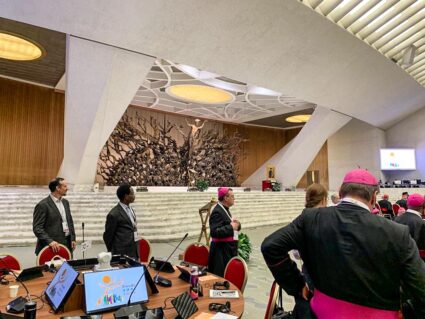
In addition to being the larger venue, the way they’ve arranged the Audience Hall has made it much more conducive to dialogue and conversation.
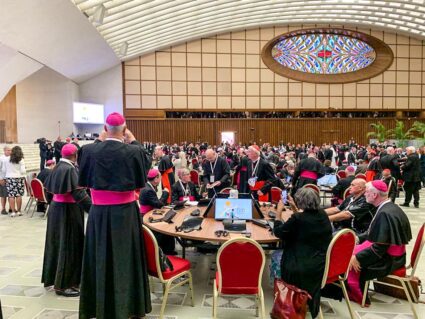
They have set up round tables with about a dozen people at each, including a facilitator, a secretary and a relator, who will help formulate the propositions of the table and present them.
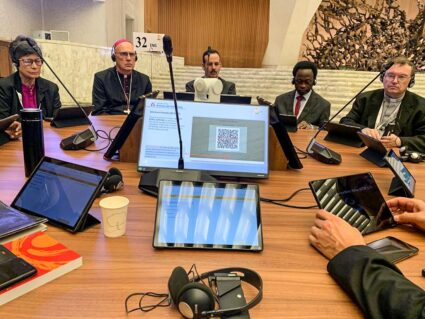
Each participant has an iPad that is used for voting and transmitting information. And when you speak, there are cameras at the table that focus on you and turn your microphone on — it’s all very high-tech!
Until next week,
Cardinal Seán
